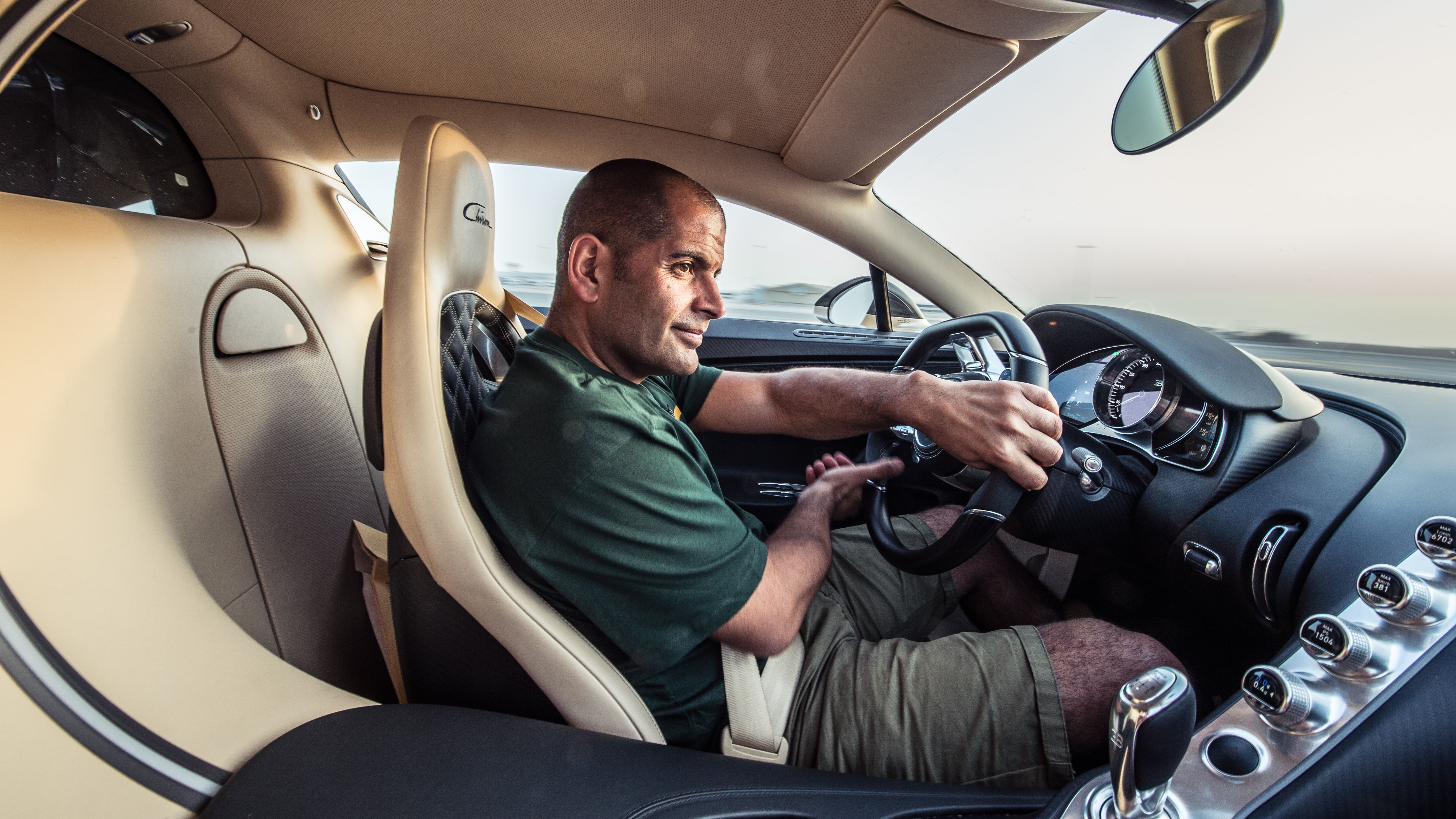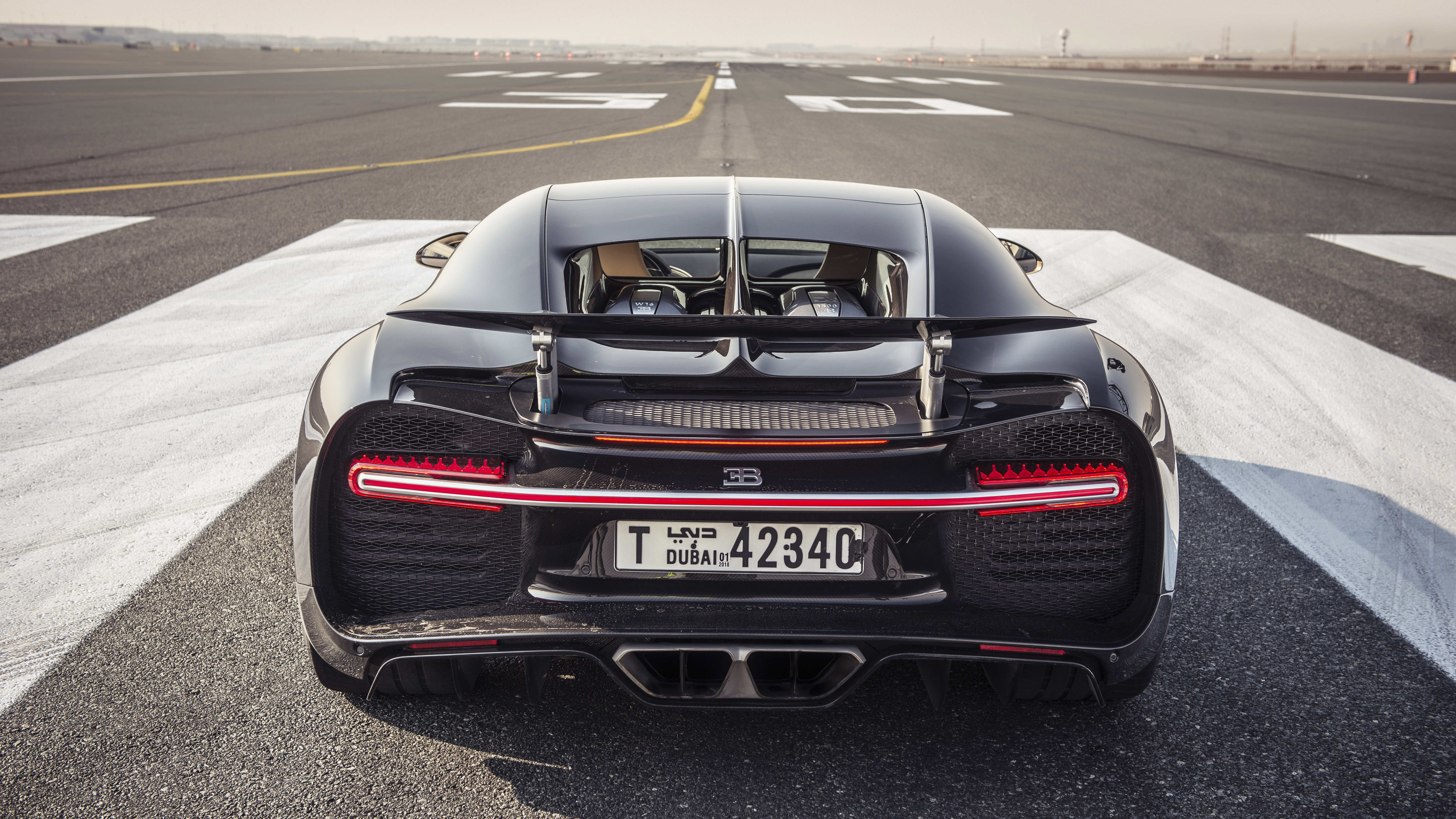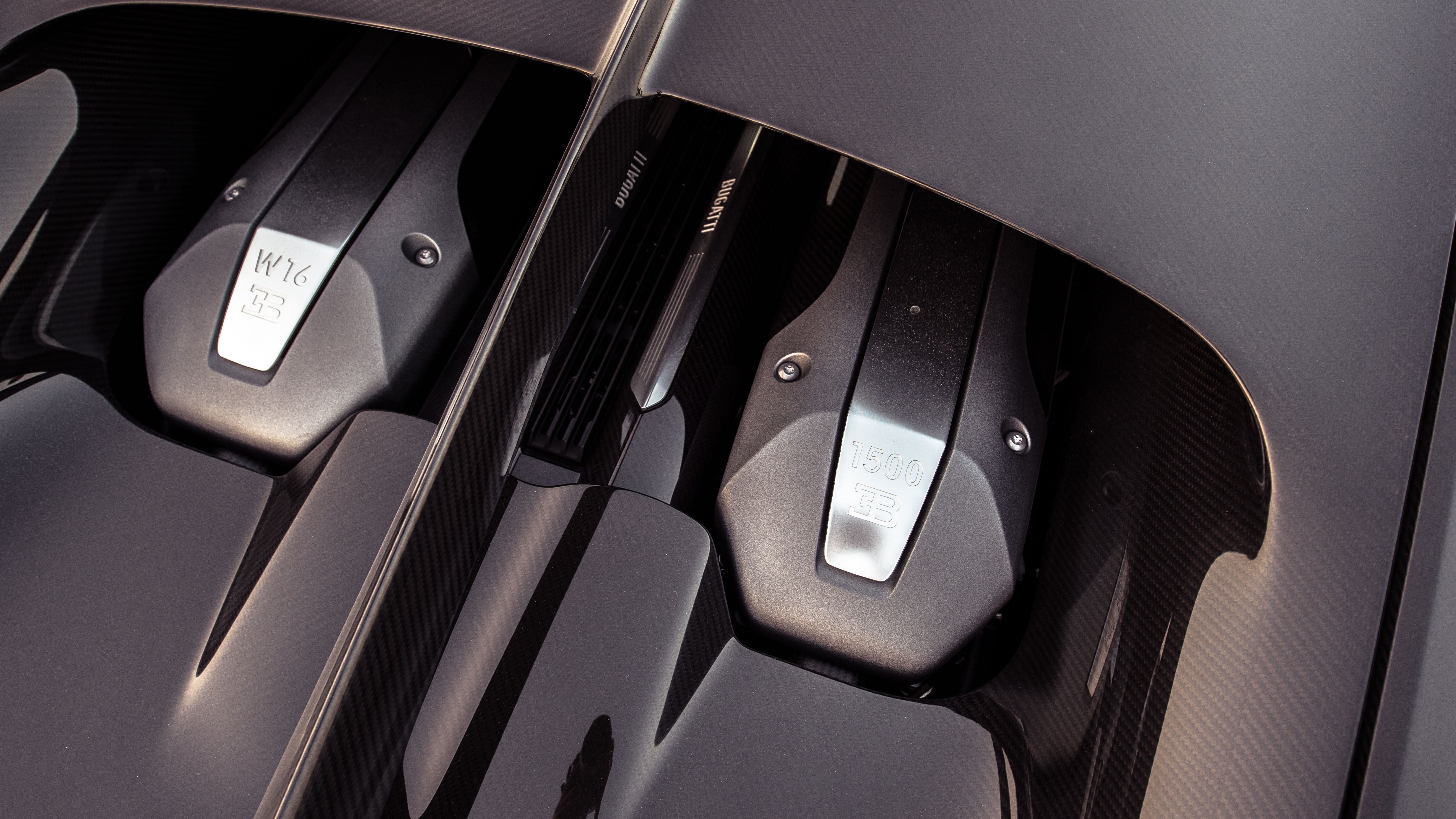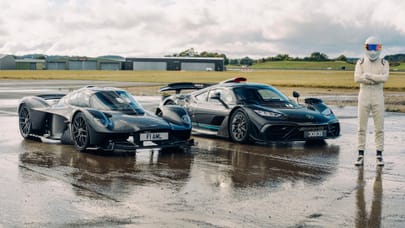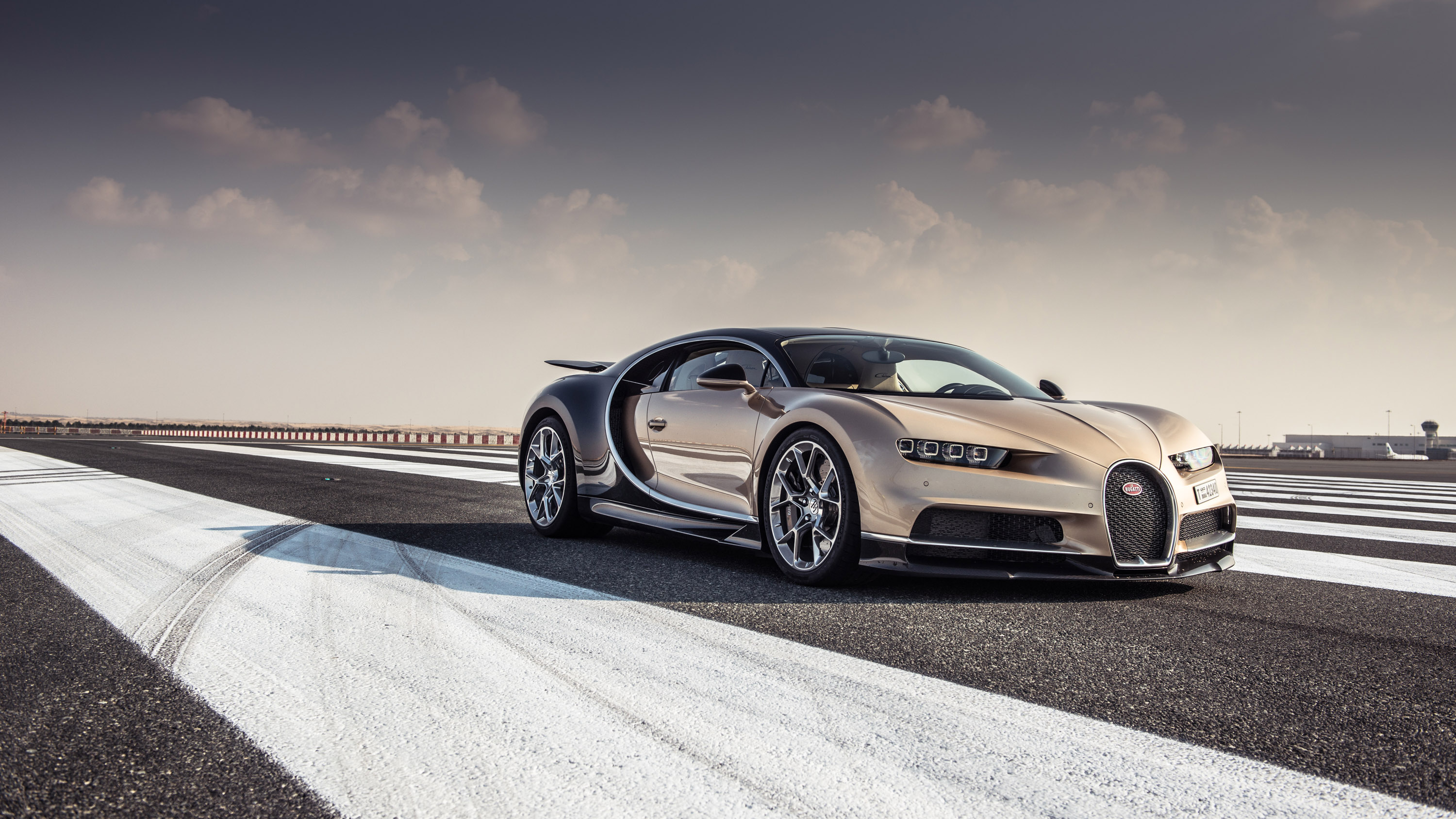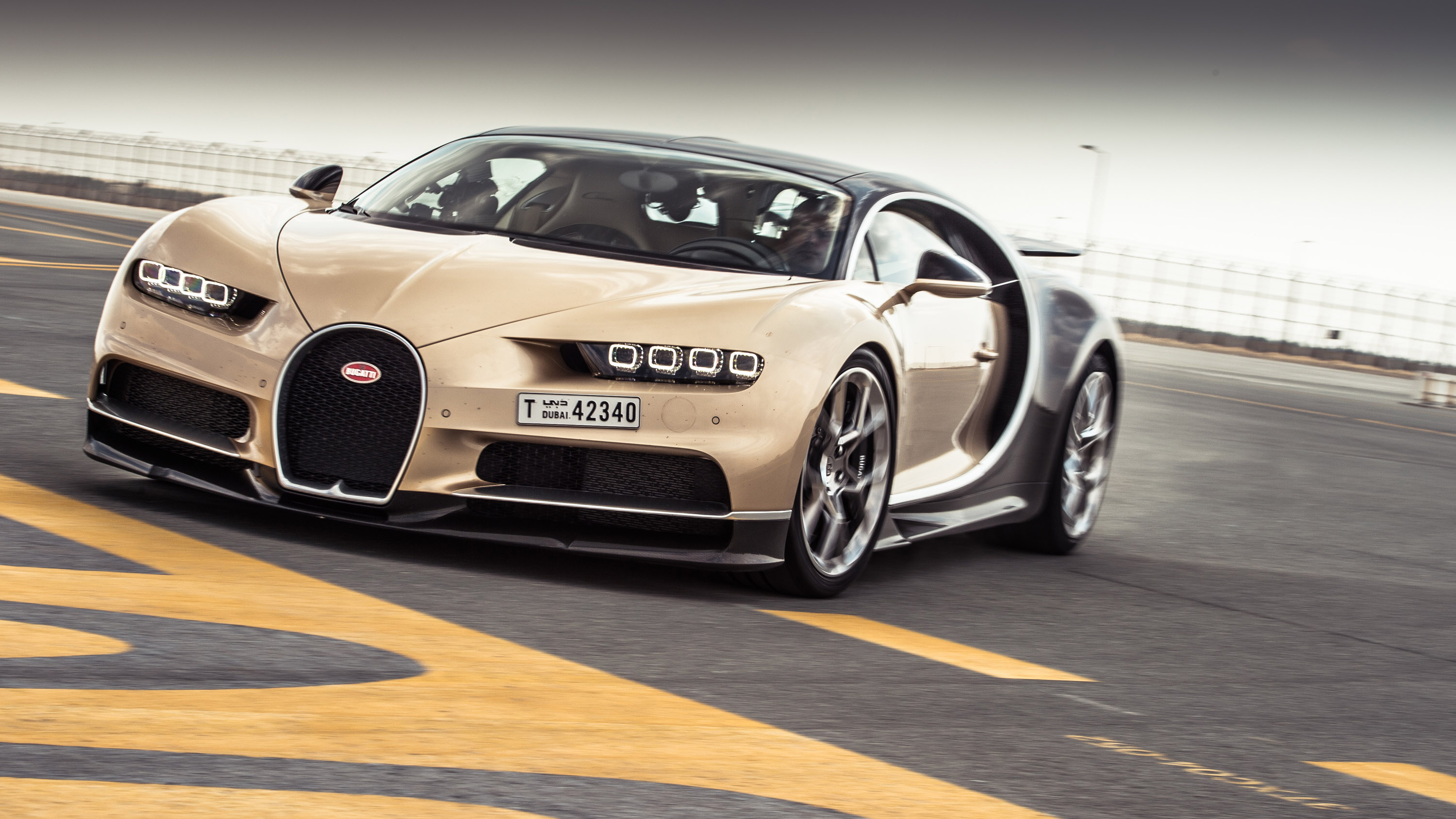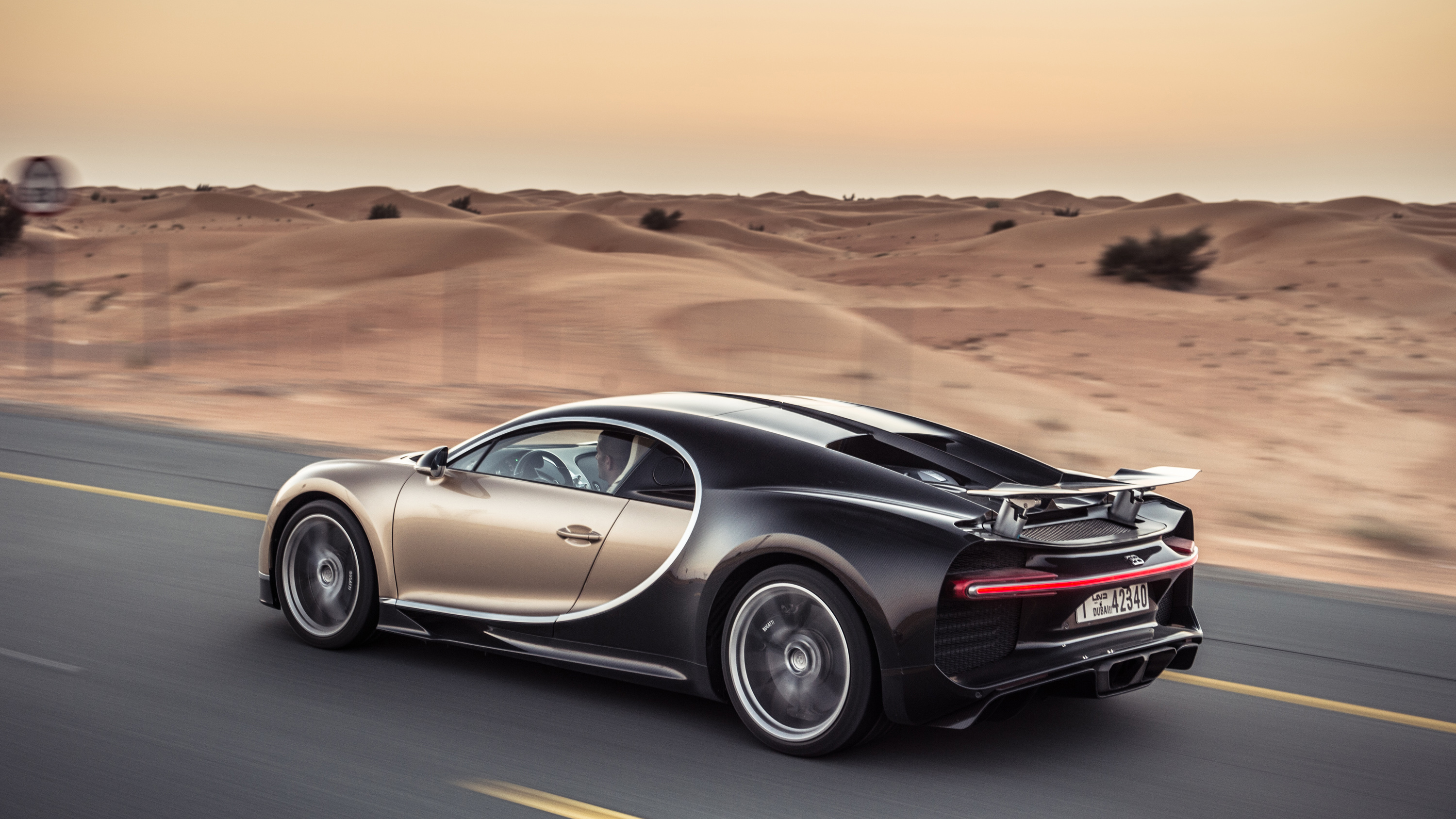
Chris Harris vs the Bugatti Chiron
Chris takes on the might of Bugatti's 1,479bhp, 261mph Chiron
Only now, locked as we are in the vortex of a marketplace that somehow places enormous value on rubbish like a Ford Escort XR3i, has the world woken up to the Bugatti Veyron. There has never been a point in time when unworthy motor cars were worth so much, and yet perhaps the most ambitious supercar ever devised is only just beginning to win the status it deserves. I’ve just driven the new Bugatti Chiron – boy, it really does feel good to type that – and to fully understand where Bugatti has taken its latest machine, we really do need to spend a few minutes understanding the Veyron.
Words: Chris Harris
Photography: Rowan Horncastle
Because the Veyron’s significance transcends its obvious performance qualifications. Yes, it was the fastest, most complicated, most expensive thing available at the time, but it also prefaced a new technology language – one that virtually all modern fast cars have now adopted: turbocharging, all-wheel drive and perhaps most significant of all, the dual-clutch gearbox. The Veyron was essentially Volkswagen’s then-boss Ferdinand Piëch showing the world what his vast conglomerate could achieve. It was his Saturn V moment. And it was nearly as costly.
And yet the world never fell in love with the Veyron. It was never a poster car in the mould of a Countach or an F40 – somehow Piëch created a kind of million-dollar Audi Quattro that we respected but didn’t crave and desire. If the Chiron has two unenviable tasks, the first is perfectly obvious – it must out-number the Veyron in every single area. The second is more subtle and perhaps more difficult to achieve: it has to become a poster car. It surely has to make those of us who could never afford such a machine desperately want to drive and own one. To want a poster of one. Because that is how legends are made.
We spent three days filming with the Chiron for the television show. They were intense, astonishing and fascinating, but this was a day to myself. A reset button to stop and consider quite what Mr Durheimer and his team have created; 24 hours to get further under that carbon skin. But to me I still only had a day to drive the Chiron at my own pace. Just a day. It seems churlish to insert the word “only” into that sentence when so few people will ever be as lucky as me, but hey-ho, I suppose I just love 1500hp cars and can’t really get enough of them. We were in the Middle East, and the car needed to be delivered somewhere and the seemingly simple exercise of nominating a location to drive and learn about the new Chiron brought home the key paradox of this type of car.
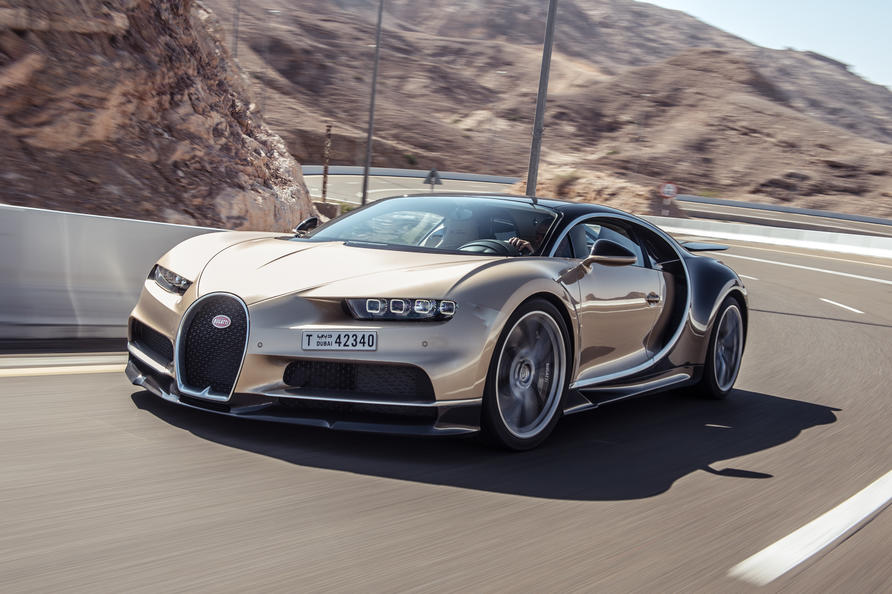
Should I have it sent straight to a race circuit? That’s surely the best place to test a car that will accelerate from rest to 186mph in a claimed 13.5secs? Absolutely not – this is no more a track car than a Citroen 2CV. Even the vast 420mm-diameter carbon silicon carbide front brakes would succumb after a few laps shouldering 1,995kg, and I have no doubt that the Michelin Cup2 rubber would suffer a similar fate.
Maybe a road? That’s a good place to begin testing a road car. But this bought back memories of my day in a Veyron back in 2006, a time when we were a little less worried about instant incarceration for small speeding indiscretions. Anything more than three seconds of full-throttle acceleration left me wondering if it was the sheer motive force or the consequences of the law discovering what speeds it created that bothered me the most. VW had built an engineering masterpiece; there just wasn’t the space to use it.
And then someone said there was a wonderful place on the border between Dubai and Abu Dhabi, the Jebel Hafeet road. I google-mapped the location and swallowed hard because it looked like just the kind of technical nightmare to undo a big, heavy machine like this one. But what is the point of this car if it can’t be used and enjoyed on such a road?
I didn’t much like the way the Chiron looked when I first saw it in pictures, and that opinion didn’t change when I clapped eyes on it in the flesh – the nagging proportional similarity to the Veyron left me thinking it was just a clumsy facelift. Expectations were low enough, but when Bugatti told me the car was painted gold I packed a precautionary sick bag, and when they unloaded it I winced and then – well, I underwent something of an epiphany. Either that or I finally went loopy, because it looked superb. Almost square thanks to its vast tracks and low roofline, despite being 52mm taller than the Veyron. Is there something about Middle Eastern light that draws a honey-like warmth from the colour gold? Maybe I’ve just stumbled into taste Hades, but I just stood there and gawped.
1946
Pre-drive warming duties were left to Andy Wallace, a man who won Le Mans when the cars were terrifyingly powerful. Asked just how potent it felt, he proffered one of those jokey-but-serious nods: “Ridiculously.” OK. Gulp.
The Veyron wouldn’t have worked on Jebel Hafeet. The strange Michelin PAX system tyre would have squidged and squirmed, the steering would have given the driver little idea of what was actually going on underneath and by the time the four turbos had exerted maximum pressure those poor brakes would have been straining for the next turn.
Top Gear
Newsletter
Thank you for subscribing to our newsletter. Look out for your regular round-up of news, reviews and offers in your inbox.
Get all the latest news, reviews and exclusives, direct to your inbox.
Within a few minutes the Chiron shredded those preconceptions. This is a road best suited to something the size of a Boxster and it felt superb. It’s the steering that gets you first – stop and consider for a second just how special your steering must be to outswagger a 1,479bhp engine. But you just never think twice about where to position the car; within minutes you find yourself threading this vastly expensive machine the way you would a £10k used M3. The rack is electric, and some large-foreheaded genius from Molsheim has managed to make seven algorithms communicate with each other to the extent that this might be one of the best electric steering systems on sale. Then again, for the money you’d expect it to be pretty good.
In the Chiron, the full madness is available most of the time
Michelin has ditched the PAX systemrubber for a Cup 2 design developed especially for this car. On a twisty road it’s night-and-day superior to anything we experienced in a Veyron. There’s big front grip from the 285mm section on turn-in, and then the 4WD system juggles things around so you can experience the full slingshot. And believe me, the first time you give it full afterburner from a second-gear turn in a Chiron is a moment to remember – up there in my top 10 memorable motoring moments (and other alliterative criteria).
You see this 1,479bhp claim in itself means nothing if it can’t be accessed or effectively deployed. For example, a Veyron Super Sport has 1,183bhp, but once traction and clumsy electronic intervention and gearshifts and fear and other factors have nibbled away at the process the number of times you actually get to use that 1,183bhp are negligible. In the Chiron, the full madness is available most of the time. Even on the Jebel Hafeet road’s dusty cambers, I could just bury it in second and the thing flew. No traction control warnings, no hesitation, just acceleration and instant gearshifts of a type I have never before experienced – not even in some zapped-out tuner GT-R.
I drove up and down the Jebel Hafeet road not believing what the Chiron was capable of. In terms of direction changes, braking performance and cornering ability, it was like a very, very powerful Audi R8. And that’s a huge compliment. As for the big W16 – it sounds more aero than automotive, it’s never musical, more a rumbling presence whose pitch alters as your peripheral vision greys-out under g-loading. There isn’t time to judge the noise, you’re too busy managing the speed. From zip to a tick under 4,000rpm, just two of the turbos spool, and then the other pair arrives with a delicious kick to send you up the road faster than you’d think possible.
The road was good, but a few extended bursts of acceleration left me asking the only question of interest to most people – at what point does the Chiron’s acceleration dissipate? For me, the difference between your averagely fast supercar, your cooking Aventador or vanilla F12, and a Bugatti is the way it pushes beyond 200mph. The ordinary ones hit a wall at the double-ton and the numbers only creep onto the dashboard thereafter.
So we headed north to the Al Maktoum airport, 4.8km of asphalt where we could run between the cargo-spec 747s as they landed. The journey was two and a half hours of tickled-throttle, carefully avoiding Dubai’s new obsession with the speed camera and enjoying the extra silence in the cabin.
Slacken the dampers and the ride is pleasantly supple, the hifi is strong and the cabin is so, so special. I love the minimalist approach. The thinking is that large infotainment screens would quickly date the Chiron, so all the information and controls are parked around the central speedometer.
The Veyron was noisy at speed, but some extra sound-deadening materials and, most importantly, double-glazed glass make the Chiron much quieter at a cruise. The glazing is so effective that when you drop the window the turbochargers’ whooshing and chattering is quite alarming. And quite gratifying – windows down, this thing sounds very naughty.
But you can’t run with the windows down at 231mph – the cabin becomes a little blowy. Not 261mph? They wouldn’t hand me the extra key because this is the first time anyone’s driven the Chiron and, rather sensibly, Bugatti feels that she shouldn’t put out on a first date.
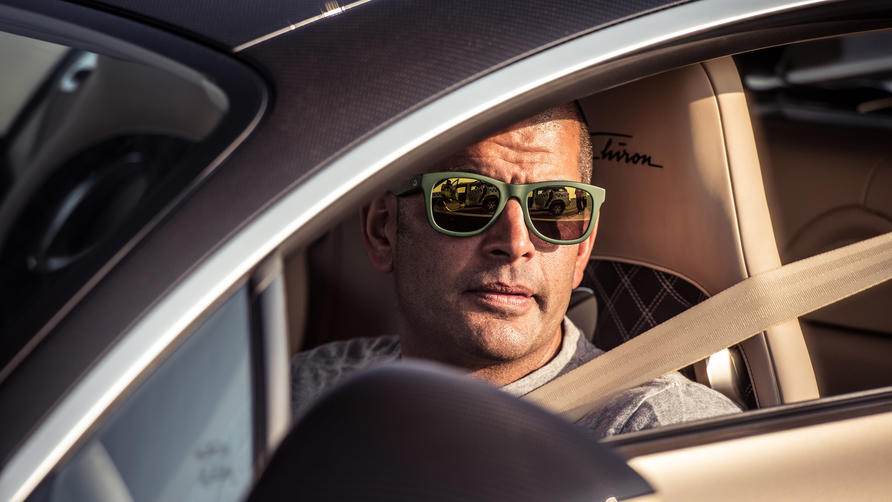
Tyres are everything in the world of 200mph-plus motoring. Andy checks them with a rigour I find slightly alarming, but then he’s the man who did 240mph in a McLaren F1, so he knows how to de-risk high speeds. The rubber needs to be fresh, if the treads are too worn, you can’t head beyond 210mph. If the pressures are too low, the same applies. The stats generated at speed in this car are more NASA than automotive – do take the time to swoon over them on.
Aerodynamically, this car is way more advanced than the Veyron. It channels air aggressively down its flanks, keeping it attached to form a stabilising pressure either side of that carbon skin. The rear wing switches for the best blend of slipperiness, downforce and air braking. The Chiron even has a separate pair of downward-facing exhausts to create a blown diffuser.
But it cannot cheat physics, and that means the Chiron has a curious battle to overcome as it hurtles towards 231mph – the acceleration is so brutal that the air flow over the tyres cools them to the extent that they lose pressure. And too little pressure could lead to very bad things. This is why you always run with the car’s tyre-pressure monitoring system on the dashboard – it runs to two decimal places and you watch it like a hawk.
I had to abort my first two runs because the front right dipped below the recommend 2.8 bar, but on the third attempt the Chiron kept pulling. The thrust from rest to 100mph is insane, it must take around 4.5secs – but the way it bulldozers its way through the next 100mph is spooky, and it just keeps going; much more aggressively than a Veyron Super Sport. It hits 231mph a little over 2km down the runway, nudging into its soft limiter with nary a hint of drama. How fast will it go unlimited? There’s talk of something in the 270s. In its lifetime, it is mooted a Chiron variant may exceed 300mph.
It all sounds so implausible, so unreal. And that’s why the Chiron is so enigmatic – it goes about its everyday business with a competence that belies just how much engineering has been thrown at it to be able to travel at such remarkable speeds. I expected a facelifted Veyron – I expected to come away questioning the Chiron’s reason for being. Instead I drove a car that does things no other car can; one with a distinct personality. I want a poster of it somewhere on my office wall.
Trending this week
- Car Review
BMW iX3




